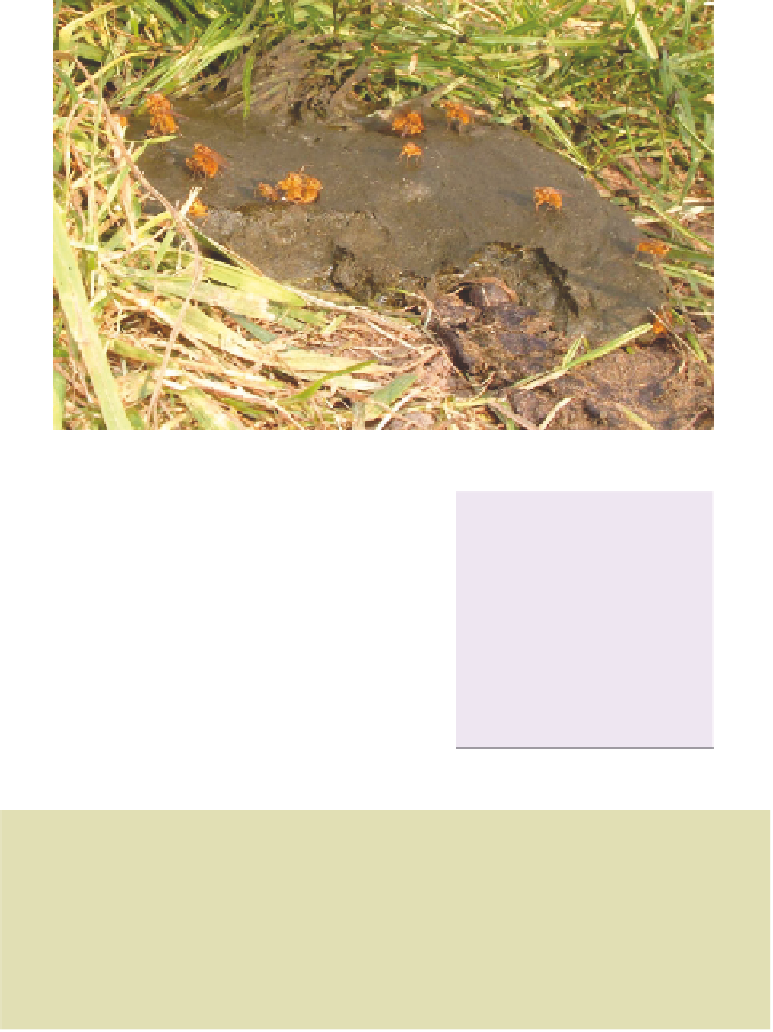Biology Reference
In-Depth Information
(a)
(b)
(c)
30
0.006
20
0.003
10
0
0
100
200
300
0
100
200
300
Stay time (min)
Time after deposition (min)
Fig. 5.3
(a) Male dung flies on a cowpat, waiting to mate with females that come
to lay their eggs in the dung. In this photo, there are six searching males. Two pairs are
being attacked by another male while the male is guarding his egg-laying female
(centre and left), and there is a struggle for possession of a single female (top margin
of the pat in the centre). Photo © G. A. Parker. (b) The number of males declines
exponentially with time after pat deposition. (c) Given this distribution of stay times,
the result is that mating success of males adopting different stay times is about equal,
as predicted by the ideal free model. From Parker (1970).
distribution in time just as the sticklebacks and ducks did so in space. It is not yet known
how the stable distribution is achieved. In theory, it could come about because different
individual dung flies have different stay times (some males are short stayers, others are
long stayers), or because individuals are variable (sometimes staying a short time,
sometimes a long time). The latter seems more likely; perhaps males vary their stay time






































































